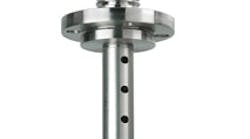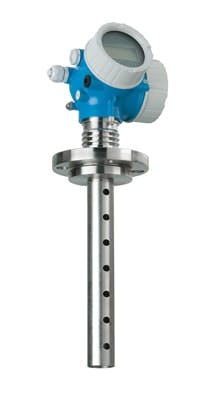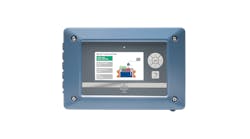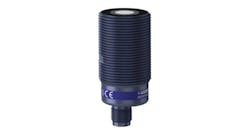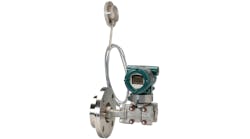Interface level is hard to do at all, and it is very hard to do well. This is because of the nature of interfaces and the physics and technology of the measurement of them. Roughly, an interface occurs when two fluids (or a gas and a fluid) meet that have dissimilar dielectric constants (Dk). Seldom is it this easy. There are gradients, rag layers, emulsions and other issues that make it difficult to measure interfaces. In fact, one vendor provides a camera-based system that looks through a thick Pyrex window to optically detect an interface.
Interfaces where the top level changes or where the dielectric constant of one of the interface layers changes (adding water to the bottom layer for a diluent, for example) are even more problematic than when the interface is two liquids of static composition and the top level is constant.
Gamma gauges require licensing, and usually, for interface detection, they require an insertion source or inserted detector. Most vessels aren’t designed to permit this. Gamma gauges are also significantly expensive, costing approximately $1000 per foot of measured level. In addition, gamma gauges have other issues that make them prohibitive for all but the most difficult applications.
Capacitance (or RF admittance) probes, while they must be inserted in the vessel, are designed to penetrate a standard ¾-in opening in the top of the vessel. Most vessels have at least one extra tank nozzle that can be used. The overall or "top" level must remain constant, so that any change in the capacitance/admittance reading reflects only a change in the interface level. Capacitance technology is not affected by emulsion or rag layers in the application.
TDR radar provides the advantage of being able to measure both top level and interface level. But the technology requires the dielectric of the upper layer to be less than 10 Dk or not enough energy will get through the fluid to reflect off the interface itself. The one drawback of this technology is that it does not work well if the application has a rag or emulsion layer, as the signal gets lost and is not returned to the transmitter.
Realizing that no one technology provides optimum measurement, Endress+Hauser has introduced the Levelflex FMP55 Multiparameter Transmitter. This transmitter fuses the two technologies of capacitance and guided wave radar on the same rod or cable sensor, and provides the benefit of both technologies. The FMP55 is the first of a new series of instrumentation that Endress+Hauser is calling its Evolution Series.
The capacitance part of the transmitter is responsible for making the interface measurement, while the TDR radar section measures the overall level. This means rag or emulsion layers no longer affect the ability to read the interface, and the use of the radar device allows the overall level to vary if required.
The FMP55 features a multi-echo tracking algorithm that can track up to 20 tank echoes simultaneously as the tank level rises or lowers. This makes sure that the transmitter will not make a "jump" to an echo that is not the true level, such as a tank internal or a vapor blanket gradient.
The FMP55, like many Endress+Hauser transmitters, is equipped with a HistoROM built into the main housing of the transmitter. All of the setup parameters are stored on the HistoROM and, in the event of an electronics change-out, all of the information can be fed directly into the new electronics package. In the case of multiple units being set up at the same time for the same measurement parameters, the same HistoROM information can be transferred into a removable display that can be removed and installed in the next transmitter, greatly reducing setup time during field commissioning.
Endress+Hauser offers three different setup methods for the FMP55. The first method is the use of the removable display. Second, the device can be fully commissioned via the three buttons on the display itself, using a menu-guided six-step quick setup. Endress+Hauser's free FTD/DTM- based FieldCare software program allows for a very flexible method for setup, and the software can be integrated into a complete lifecycle management system. HART and Profibus PA outputs are available.

Leaders relevant to this article:
